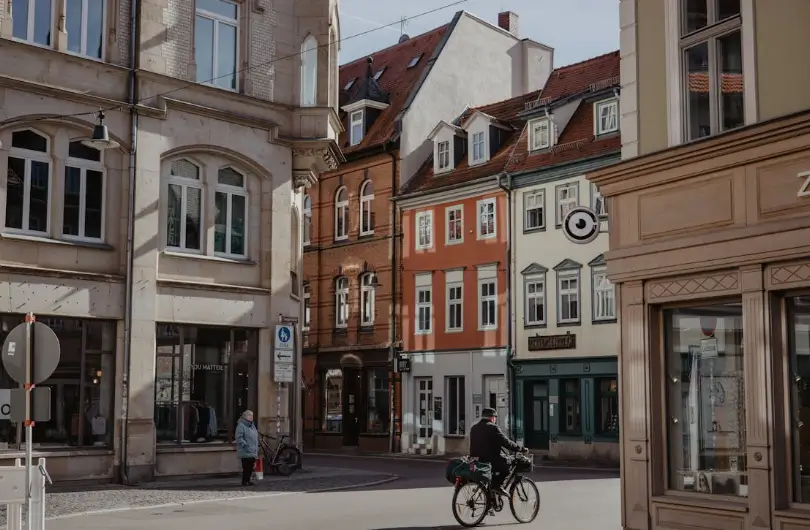How Urban Food Forests Cool Cities and Feed Communities
Boston is planting more than trees, it’s planting resilience.
At 44 Maple Street in Dorchester, neighbors, volunteers, and community leaders came together to break ground on the city’s newest urban food forest. On the surface, it may seem that this project is about fruits and herbs. But the vision goes much farther. It's about fighting heat, improving food access, and reclaiming public space in neighborhoods that havel ong been underserved.
“It’s more than a park—it’s a promise to the community.”
— Allandrea Aguirre, Executive Director, Boston Food Forest Coalition
What's an Urban Food Forest?
Urban food forests are public spaces designed to mimic natural ecosystems layered with edible plants like fruit trees, berry bushes,herbs, and vines. Unlike traditional community gardens, these systems are perennial, lower-maintenance, and often free to harvest from. Their goal? Long-term food access, with the benefits of shade, and ecological repair.
“It’s food sovereignty, climate resilience, and neighborhood healing—all in one space.”
— Boston Food Forest Coalition member

Cooling the Heat Island
Neighborhoods like Dorchester experience higher temperatures due to a phenomenon known as the urban heat island effect. This effect is a result of dense concrete, limited tree cover, and poor air circulation which raise ambient heat levels. In Boston, this can mean a 3°F difference between leafy and less-leafy neighborhoods. Now, three degegrees may not soung like much, but in urban environments, especially during heat waves, it can make a big difference in public health, livability, and infrastructure strain. Let's take public health for example. A 3 F difference can induce Heat-related illnesses (like heat exhaustion or heat stroke) which can increase sharply with even slightest rises in temperature. According to the EPA, a few degrees can significantly raise mortality rates, especially for vulnerable groups like the elderly, children, and those without air conditioning. Let's say it's already 95°F, add 3 more degrees and it can push the body past its limit, especially in areas without tree cover or cooling infrastructure. Now food forest hellp mitigate this by offering shade from trees and vines, cooler ground temperatures, increased moisture retention, and a more breatable, biodiverse environments.

Why This Matters
Food forests aren’t just “green” spaces, they’re multifunctional, high capacity infrastructure. In one space they offer cooling and climate resilience by reducing temperatures and storing carbon, at the same time they are providing free food access which provide healthy food in communities that needed it most. A Stanford Natural Capital study found they can deliver $3.5 million in cooling services annually (saving ~600 lives), while reducing flooding, increasing carbon capture, and expanding green access. It also helps to provide buy in by community members by allowing them to care and maintain the forrest. This in turn helps to create a stronger more connected community. And since these are protected through land trusts they help avoid gentrification or drive displacement. The Boston Food Forest Coalition manages a network of these forests, with plans to expand from 9 to 30 by 2030.
Spotlight: 44 Maple Street
The new food forest at 44 Maple Street in Dorchester is a product of deep community collaboration. From a 2022 community proposal through public meetings with the Boston Planning & Development Agency, to ground-breaking in April 2024, this site has been shaped by local voices and vision
Several community groups, including the Sonoma‑Maple‑Schuyler Tenant Association and Project R.I.G.H.T, worked side by side with the Boston Food Forest Coalition to shape design, plantings, and stewardship models. The site features pathways, benches, a gazebo, fruit and nut trees, pollinator shrubs, and raised planting beds. Construction finished in May 2025, with the site opening this June.
“This land belongs to the community—not just in sentiment, but in structure.”— Boston Food Forest Coalition
The Boston Food Forest Coalition manages a network of these forests, with plans to expand from 9 to 30 by 2030.
A National Trend
Boston is not the only city embrasing foodd forests. Seattle's Beacon Food Forest is one of the largest in the U.S. spanning seven acres. Then there's Atlanta's Ag Lanta Project which integrates food forests with school programs. Not only are other cities picking up the trend, but the USDA and U.S. Forest Service now recognize urban agroforestry as climate tools which helps with suttain these projects with grants and research.
There are now over 70 urban food forests across American cities, turning vacant lots, schoolyards, and parks into edible green spaces.

How You Can Get Involved
I know what you’re thinking: “This is awesome—how can I help?”...(yes I can read your mind...). Well...let me tell you. If you live in Boston, you should attend the grand opening at 44 Maple Street this Friday, June 28th at 12 PM. Think about volunteering (or better yet, volunteer) with the Boston Food Forest Coaliation. Check out Bostonfoodforest.org to see how. Lastly, advocate for food forests in your city's comp plan, climate strategy, or parks program.
“Urban food forests aren’t just a good idea—they’re the future of just cities.”
Up next - Equity in Zoning; What Planning for People Really Looks Like.
%20(1200%20x%20237%20px)%20(300%20x%2059%20px).webp)


.webp)


